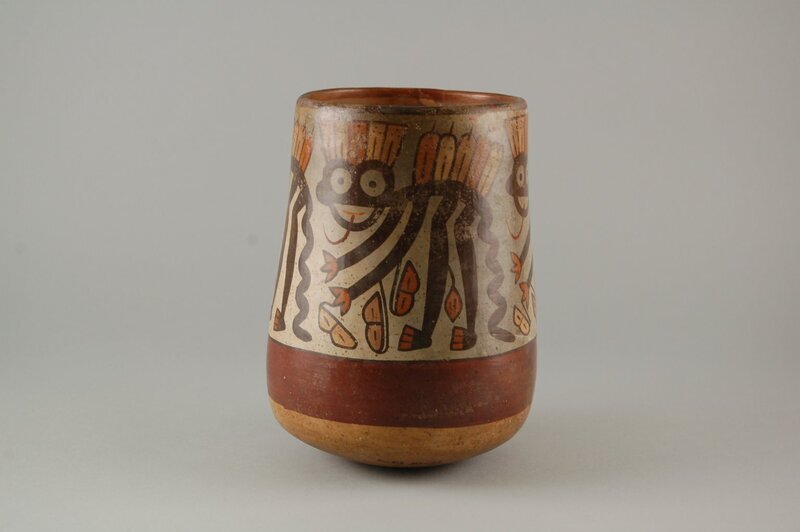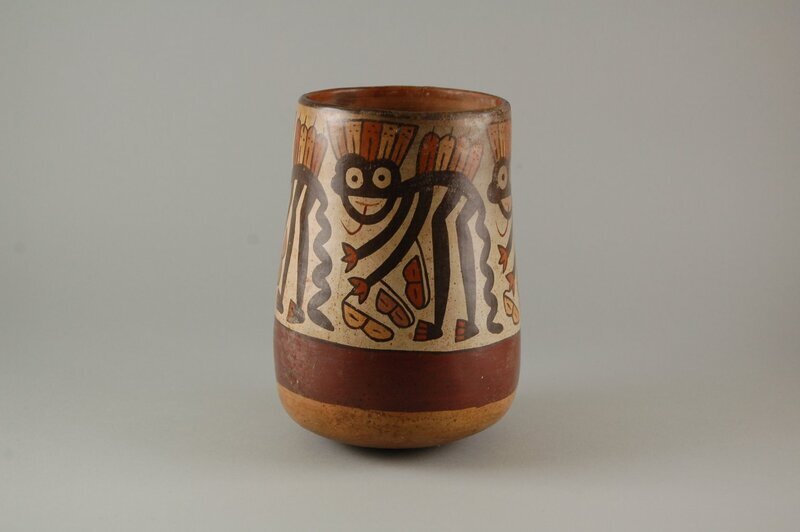Jar Item Number: 86.224.8 from the Brooklyn Museum


Description
A cylindrical ceramic jar that narrows slightly as it goes from its rounded base to the rim. The base of the jar is slipped with a band of yellow; the band above is reddish-brown; the third and largest section is decorated with four anthropomorphic monkeys on a white ground. The monkeys bend forward with long legs and slightly bent knees, arms that curve gently, and long, wavy tails. Their heads are heart-shaped, with round white eyes and black pupils. Their half-circle mouths have long red tongues extending outward. Multicolored feathers emanate from the top of their heads and bodies. The animals hold bean pods. Condition: good.
Credit Line
Gift of the Ernest Erickson Foundation, Inc.
Label
Agricultural fertility is the subject of this Nasca jar, on which four anthropomorphic monkeys—animal representations with human characteristics—hold or harvest bean pods. Further reinforcing this fertility theme, the monkeys display attributes of other animals related to fertility: the squiggly tail of a tadpole, an amphibian associated with water that transforms into a frog, and the feathered wings of an insect, beneficial for spreading pollen.
La fertilidad agrícola es el tema de esta vasija Nasca, en la cual cuatro monos antropomórficos—representaciones animales con características humanas—sostienen o cosechan vainas de frijol. Reforzando aún más el tema de la fertilidad, los monos presentan atributos de otros animales también relacionados con la fertilidad: la cola serpenteante del renacuajo (un anfibio asociado con agua que se transforma en rana) y las alas como emplumadas de un insecto, beneficiosas para diseminar polen.
Item History
- Made between 325 and 440
What
Who
- Culture
- Nasca
Where
- Holding Institution
- Brooklyn Museum
When
- Creation Date
- between 325 and 440
Other
- Location
- Arts of the Americas Galleries, 5th Floor
- Classification
- Vessel